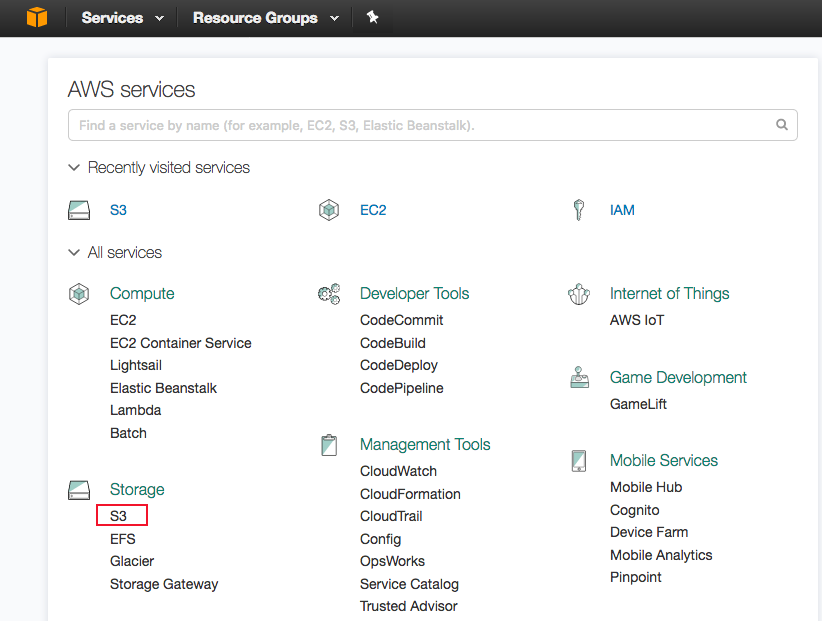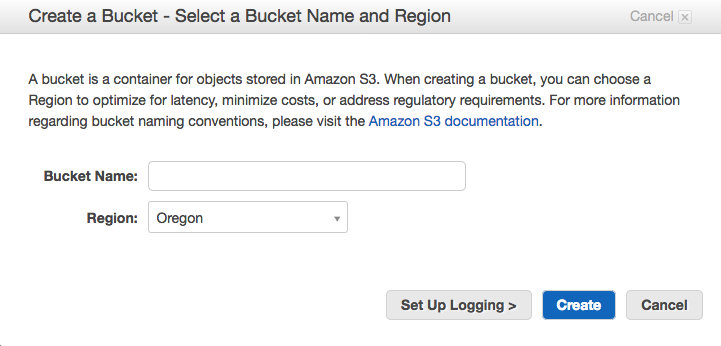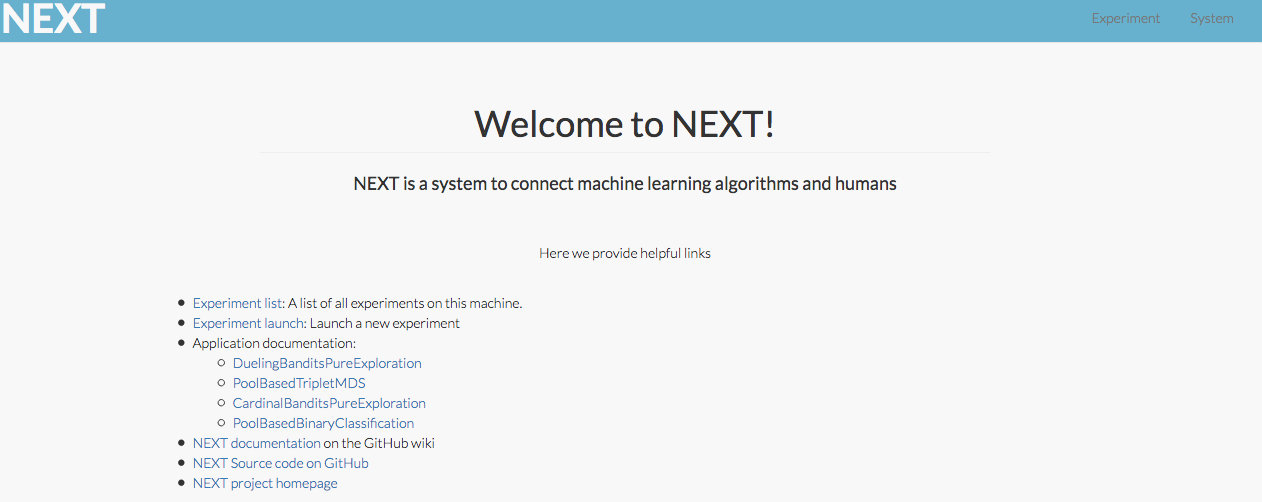This step largely references the instructions on the NEXT wiki, Launching NEXT on EC2
- Follow the steps on the NEXT wiki, Launching NEXT on EC2. When your instance has a status of Running, return to this page.
- For persistent data storage, we need to create a bucket in AWS S3. From AWS, click on the orange cube, then Storage->S3.

- Click Create Bucket.

- Give your bucket a meaningful name, and save the name in your Experiment Details file. The bucket name is required each time you launch a new experiment. Create the name, make sure Region is set to Oregon, and click Create.

- Now that your bucket has been created and your instance is set up and running, you can start setting up and running experiments from your web browser. The URL for your instance is the Public DNS that appears in the bottom frame once your instance is running. It will look something like this: ec2-35-163-34-6.us-west-2.compute.amazonaws.com (but with different numbers before us-west-2.computer.amazonaws.com)
Copy the Public DNS and paste it into a new browser tab AND ADD :8000/home/ AFTER amazonaws.com. So the full URL should look like: http://ec2-35-162-166-198.us-west-2.compute.amazonaws.com:8000/home/ If everything has been set up correctly, you will see a screen that looks like this:
 HOORAY. You are now ready to set up and/or run experiments! When you have finished setting up and/or running your experiment, return to the EC2 Dashboard and select your instance name. Then go to Actions -> Instance State -> Stop. DO NOT CLICK TERMINATE. Terminating your instance will erase all your data!
HOORAY. You are now ready to set up and/or run experiments! When you have finished setting up and/or running your experiment, return to the EC2 Dashboard and select your instance name. Then go to Actions -> Instance State -> Stop. DO NOT CLICK TERMINATE. Terminating your instance will erase all your data!
Ready for Step 2?
Important Notes
- You do not need to create an access key, secret key, bucket name, and keypair each time you want to run an experiment. A typical use case would be to set up a NEXT instance and use that instance for multiple experiments, stopping and starting the instance in between participant sessions. When the instance is in a Stopped state, you may accumulate small charges for S3 data storage, but most charges arise from keeping the instance Running.
- The Public DNS URL changes each time you start and stop an instance. For example: You have participants scheduled to do an experiment on Thursday. On Monday, you set up your experiment on NEXT and test it to make sure it works. When you are satisfied, stop the NEXT instance so charges don’t accumulate for unused server time. On Thursday, a couple hours before participants arrive, go back to the EC2 Dashboard and start your instance. This is the URL that you will give to your participants. If you are using Qualtrics to link to your NEXT study, you must update all URLs in Qualtrics to the active URL, each time you start and stop a NEXT instance.
